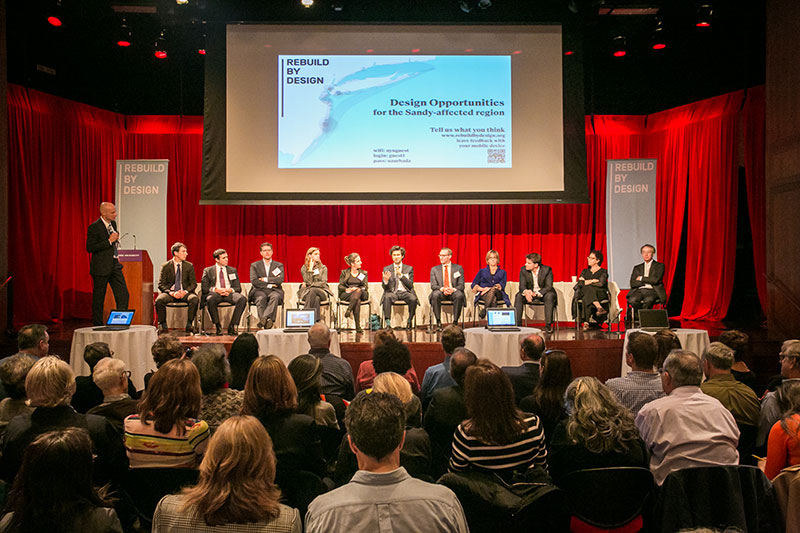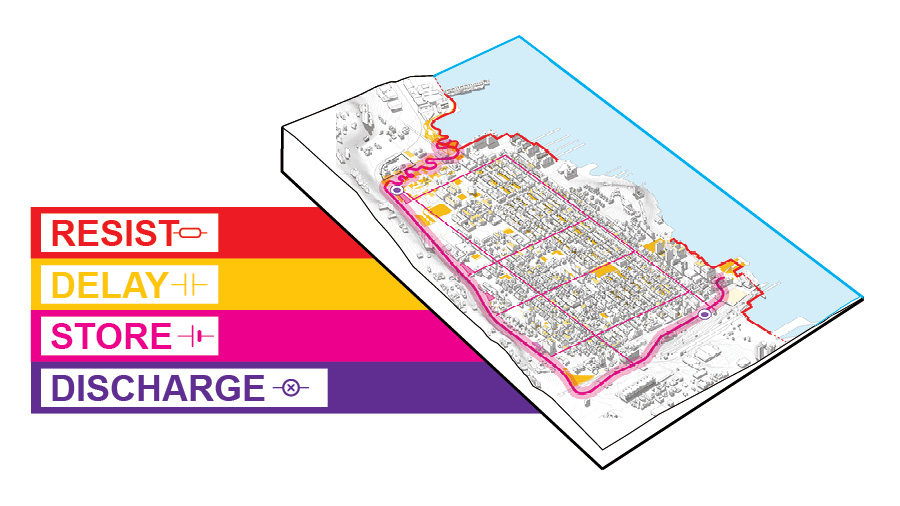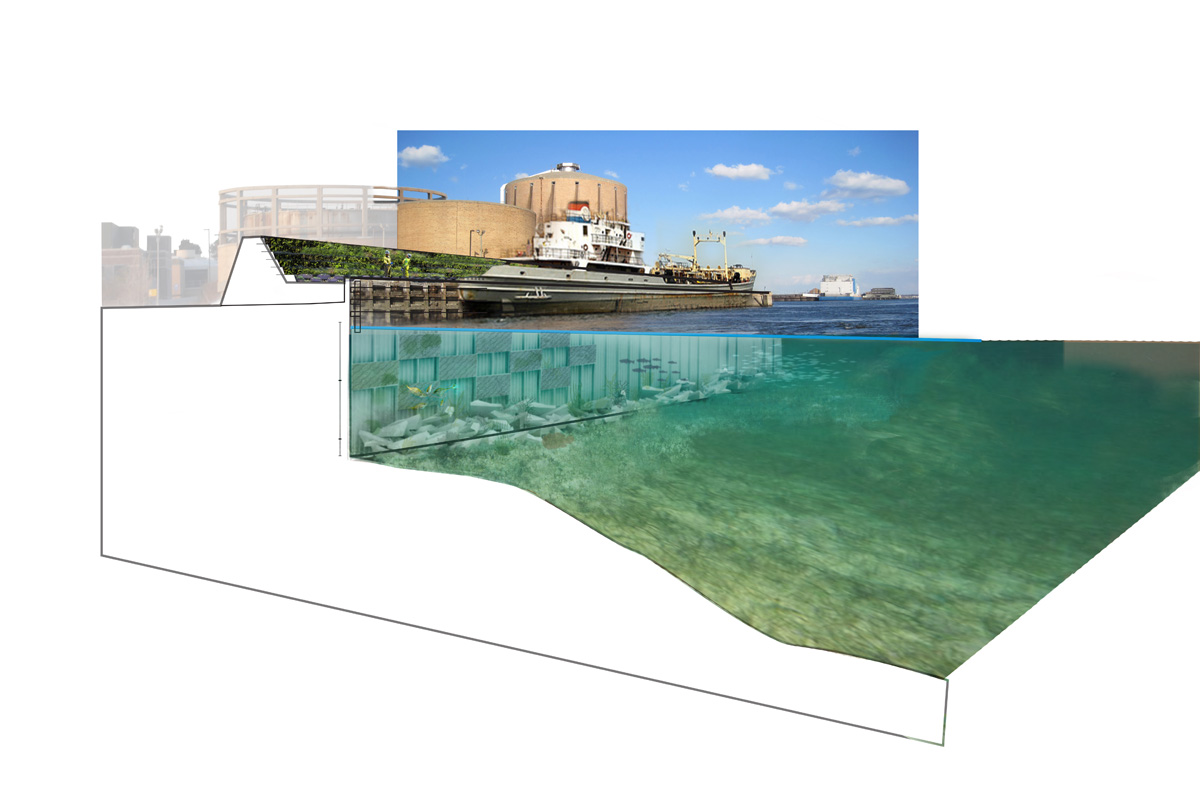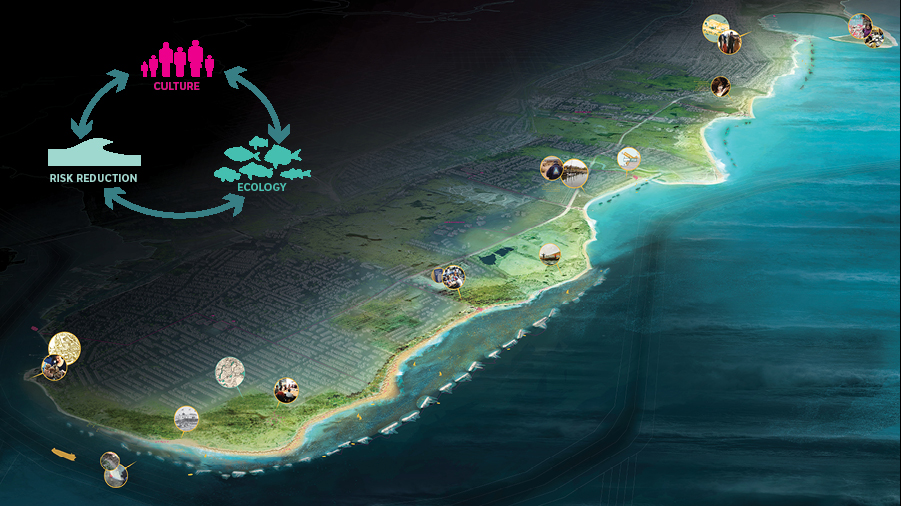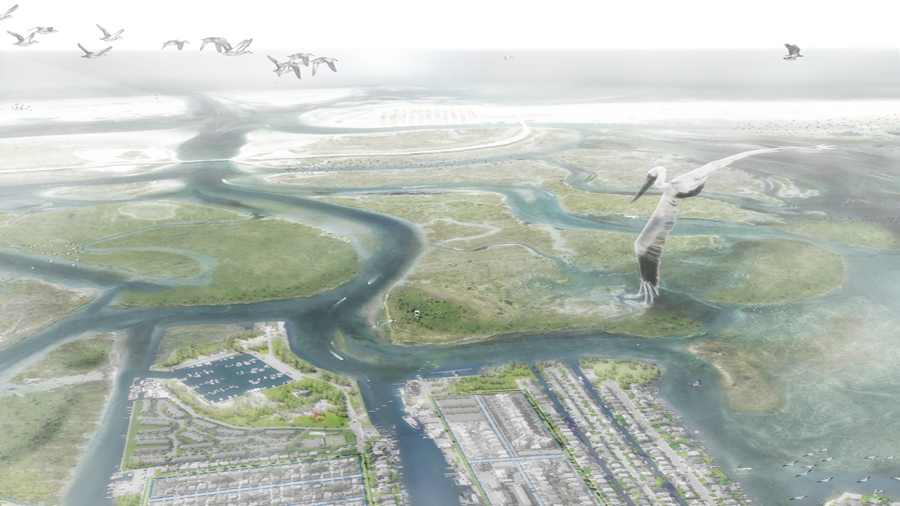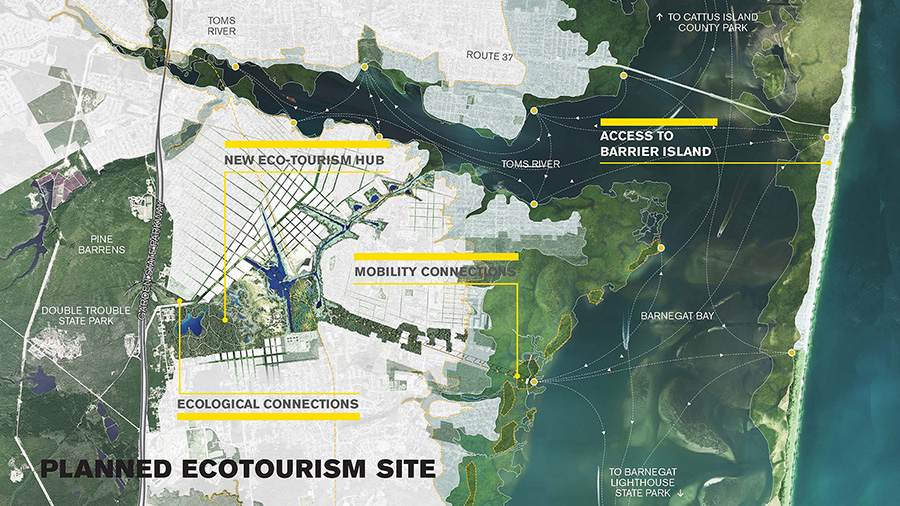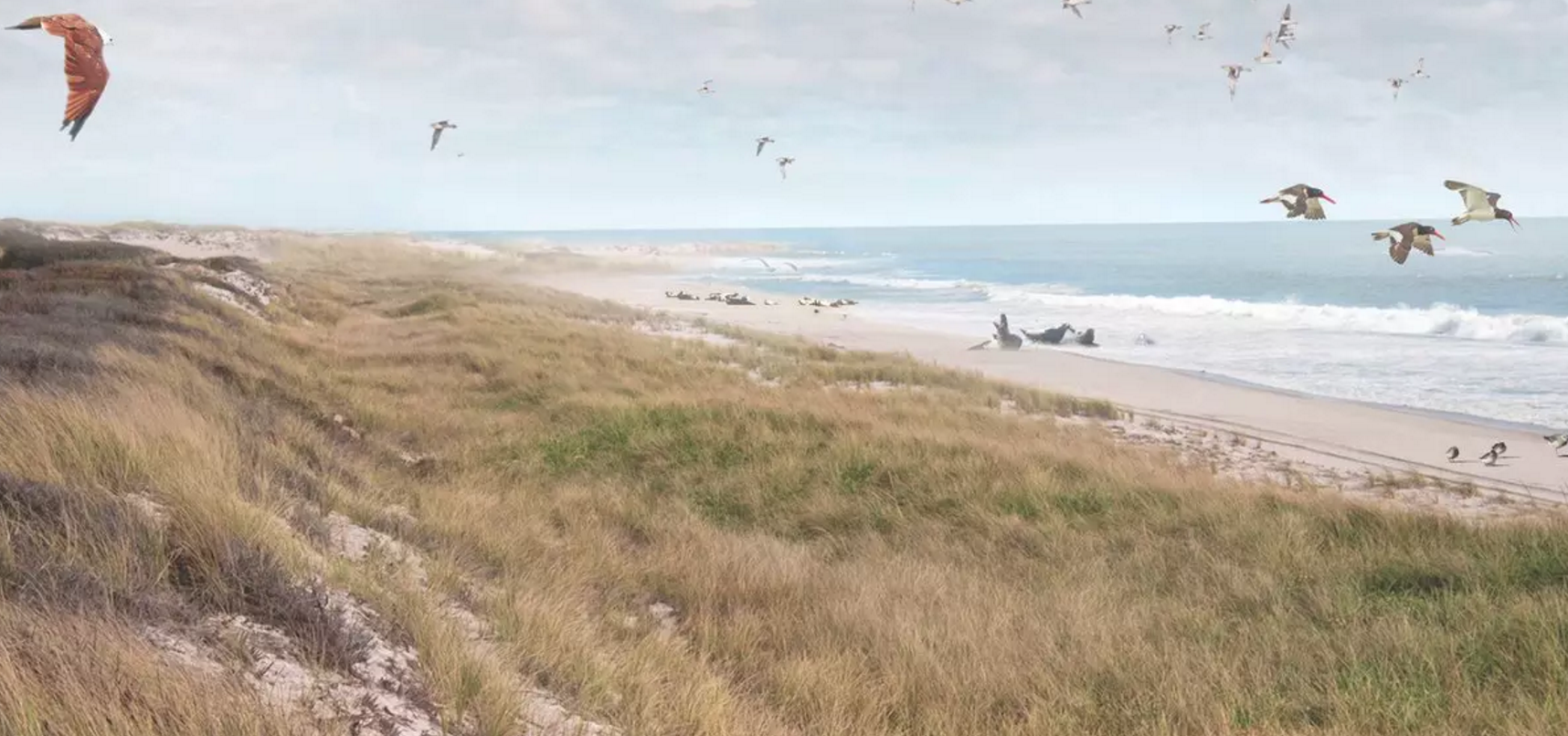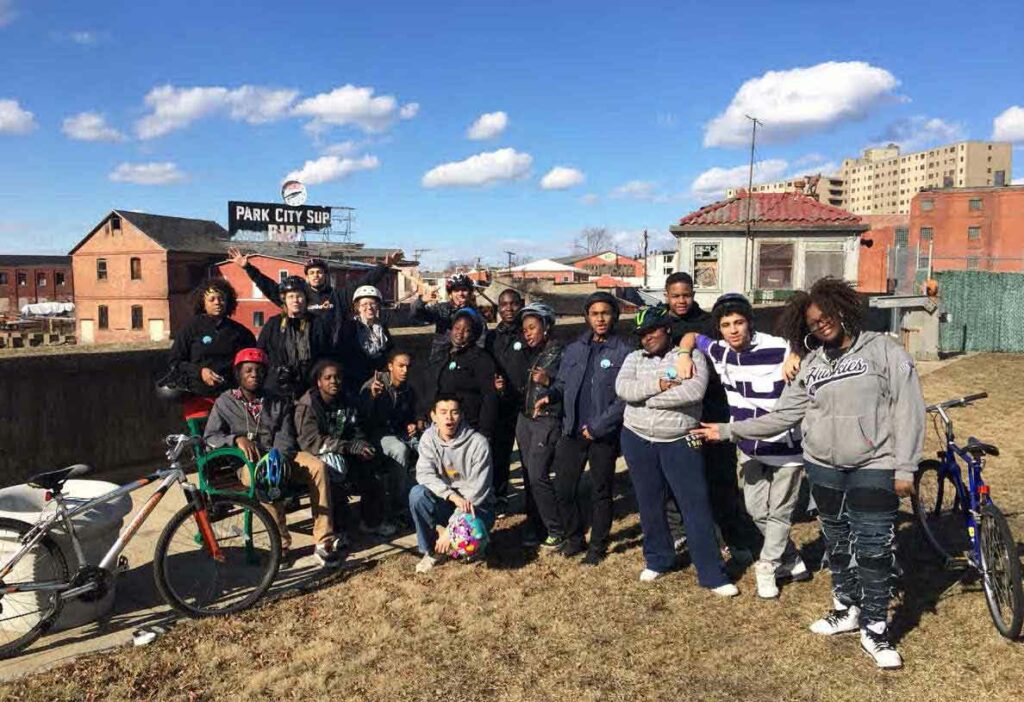After Hurricane Sandy impacted 13 states, costing more than $65 billion in damages and economic loss, President Obama’s Hurricane Sandy Rebuilding Task Force launched an innovative design competition, Rebuild by Design, that coupled innovation and global expertise with community insight to develop implementable solutions to the region’s most complex needs. In partnership with U.S. Housing and Urban Development (HUD), Municipal Art Society, Regional Plan Association, NYU’s Institute for Public Knowledge, The Van Alen Institute, and support from The Rockefeller Foundation and other philanthropic partners, the multi-stage competition guided participants through in-depth research, cross-sector, cross-professional collaboration, and iterative design. Participants collaborated with community and local government stakeholders to ensure each stage of the competition were based on the best knowledge and talent and final proposals would be realistic and replicable.
The Rebuild by Design Hurricane Sandy Design Competition changed the way the federal government responds to disaster and became the model now used in other regions to prepare communities for future uncertainties. Its success has also inspired other efforts. In 2014, President Obama launched the National Disaster Resilience Competition, which awarded $1 billion to 13 cities and states across the country to fund resilience-building projects. Internationally, The Rockefeller Foundation, in partnership with the USAID and The Swedish International Development Agency, developed the Global Partnership for Resilience based on the Rebuild by Design competition model and collaborative approach. The competition model’s success also led to the formation of the Rebuild by Design organization, which is helping cities and communities around the globe become more resilient through collaborative research and design.
